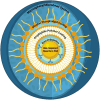Bioinspired quantum dots: advancing diagnostic and therapeutic strategies in breast cancer
- PMID: 40761912
- PMCID: PMC12320983
- DOI: 10.1039/d5ra03443d
Bioinspired quantum dots: advancing diagnostic and therapeutic strategies in breast cancer
Abstract
Bioinspired quantum dots (BQDs) have garnered significant attention in recent years because of their unique characteristics, including their nanoscale size (less than 10 nm), high surface area, photoluminescence, chemical stability, and ease of synthesis and functionalization. Researchers are increasingly shifting towards the use of biomass-derived precursors instead of chemical compounds for BQD fabrication. These biomass sources are sustainable, eco-friendly, cost effective, widely available, and enable the conversion of waste into valuable materials. In this review, we provide a comprehensive analysis of various fabrication methodologies for BQDs, and the diverse raw materials used in recent studies. Owing to their exceptional properties, combined with simple synthesis routes, BQDs are promising candidates for a range of biomedical applications, particularly in bioimaging, targeted drug delivery, and phototherapy for cancer treatment. BQDs exhibit excellent aqueous solubility, low toxicity, biocompatibility, facile biofunctionalization, and selective cancer targeting. Furthermore, their photoluminescent properties, high longitudinal relaxation values, photothermal effects upon laser irradiation, ability to generate singlet oxygen, and production of H2S for gas therapy make them highly effective as cancer theranostic agents. This review specifically highlights the potential of BQDs in breast cancer management while addressing existing challenges in their application.
This journal is © The Royal Society of Chemistry.
Conflict of interest statement
The authors declare no competing interests.
Figures














Similar articles
-
Innovative approaches for cancer treatment: graphene quantum dots for photodynamic and photothermal therapies.J Mater Chem B. 2024 May 8;12(18):4307-4334. doi: 10.1039/d4tb00255e. J Mater Chem B. 2024. PMID: 38595268 Review.
-
Non-Ti MXenes: new biocompatible and biodegradable candidates for biomedical applications.J Mater Chem B. 2025 Jan 22;13(4):1212-1228. doi: 10.1039/d4tb01904k. J Mater Chem B. 2025. PMID: 39688533 Review.
-
Carbon quantum dots as versatile nanomaterials for improving soil health and plant stress tolerance: a comprehensive review.Planta. 2025 Jul 9;262(2):44. doi: 10.1007/s00425-025-04758-2. Planta. 2025. PMID: 40632315 Free PMC article. Review.
-
Rapid molecular tests for tuberculosis and tuberculosis drug resistance: a qualitative evidence synthesis of recipient and provider views.Cochrane Database Syst Rev. 2022 Apr 26;4(4):CD014877. doi: 10.1002/14651858.CD014877.pub2. Cochrane Database Syst Rev. 2022. PMID: 35470432 Free PMC article.
-
The Potential of Next-generation Multi-functional Nanoplatforms for Breast Cancer.Anticancer Agents Med Chem. 2025 Jul 24. doi: 10.2174/0118715206392103250715115020. Online ahead of print. Anticancer Agents Med Chem. 2025. PMID: 40734427
References
-
- Information and Resources about Cancer, https://www.cancer.org, 2025,
-
- Marsh S. Liu G. Adv. Drug Delivery Rev. 2009;61:381–387. - PubMed
-
- Zeng X. Liu C. Yao J. Wan H. Wan G. Li Y. Chen N. Pharmacol. Res. 2021;163:105320. - PubMed
-
- Garg N. K. Tandel N. Jadon R. S. Tyagi R. K. Katare O. P. Drug Discovery Today. 2018;23:1610–1621. - PubMed
-
- Sutradhar K. B. Amin Md. L. Int. Sch. Res. Not. 2014;2014:939378.
Publication types
LinkOut - more resources
Full Text Sources

